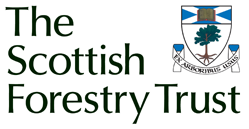Bechstein's Bat Survey
Carried out by: Bat Conservation Trust
Summary Description:
The project is the first time that this most elusive bat has been the subject of a concerted effort to establish baseline distribution data across the entire species range in England and Wales. The aim of the project was to produce a more accurate distribution map and gather information to inform future conservation policy and woodland management.
The Bechstein's bat is one of the rarest of our mammals and a UK Biodiversity Action Plan priority species. Until now it has been difficult to detect as it rarely leaves the canopy of its favoured broadleaf woodland habitat.
Leading UK bat researchers developed and tested a ground-breaking technique to relay ultrasonic social calls to locate these very secretive bats. Their survey techniques have been adopted as the basis for the National Bechstein's Bat Survey across southern England and Wales. The project relied on the involvement of experienced, specially trained volunteers recruited through the local bat group network and the support of landowners and woodland managers.
Timescale: 2007-2011
Project Outcomes:
As part of the work of BCT’s new Bats and Woodland Officer, the BCT will be producing woodland management guidance specific to this species in 2012. The aim of the guidance will be to ensure that appropriate advice is given to ensure woodlands where Bechstein’s bats are found are managed appropriately to provide the best habitat for this species, but also to allow landowners to understand when and how work can be undertaken. It will also provide information on funding and grant schemes which landowners may be able to access to promote the conservation of Bechstein’s bat on their site.
The key information on Bechstein’s bats and woodlands that has emerged from this project is summarised below:
a) Breeding female Bechstein’s bats are predominantly found in woodlands that meet three or four of the following criteria:
- Broadleaf woodland particularly that dominated by oak and/or ash
- At least 75% canopy cover
- Native understorey present, particularly hazel and hawthorn
- At least 50% understorey cover
b) Core maternity areas need a woodland size of at least 25ha.
c) This woodland may be made up of one woodland block or may consist of two to three smaller, connected blocks. This is particularly true for woodland sites in Somerset and Dorset where maintaining woodland connectivity is vital.
d) Understorey cover is particularly important and should be retained where possible.
e) Bechstein’s bat maternity roosts are usually found within 1km of a water body.
f) Males, non-breeding females and smaller breeding colonies may be found in woodlands that do not meet the above criteria. These individuals are important to the long-term success of a colony and therefore woodlands where there presence has been identified should also be sensitively managed.
g) Our current understanding of the UK range of the Bechstein’s bat is that the species is present from Devon in the west of England to Kent in the east, extending north to Worcestershire and Buckinghamshire, with additional outlying male records in south Wales.
h) Core areas for this species are Somerset, Dorset, Wiltshire, Hampshire, Isle of Wight and West Sussex. The long-term viability of this species in the UK requires significant conservation effort in these areas to safeguard populations and sensitively manage and maintain key woodland sites.
j) Significant edge of range populations are also present in Worcestershire and Buckinghamshire. These populations are likely to be extremely vulnerable to any changes in woodland management practices or land use change for example resulting from large-scale development.
